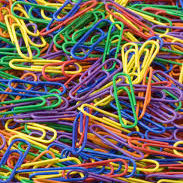Much of foreign aid is spent on goods that are shipped overseas: food supplies, medicines, or humanitarian assistance in emergency situations.1
But a surprising amount of what’s reported as foreign aid is not sent abroad; it’s spent domestically. Foreign aid budgets in rich countries can include the costs of hosting refugees, some scholarships to foreign students, and some administrative costs that are spent domestically.2 These domestic expenses are reported by countries to the OECD, which tracks and measures foreign aid allocations, so they are included in the widely quoted aid figures you’ll typically see. We’ll refer to these combined costs as “aid money spent at home”.
In 2023, 22% of total foreign aid for all Development Assistance Committee (DAC) countries was spent at home. The DAC countries are a group of 32 high-income countries; from this point onwards, we’ll refer to them as “rich donor countries”.3
In this article, we’ll look at how aid money spent at home varies across countries and categories, how this has changed over time, and what this means for the amount of money available for support overseas.
More foreign aid is spent domestically, mostly to host refugees
So, in 2023, 22% of foreign aid was spent domestically in rich donor countries. That was a record year, both in absolute and relative terms. Domestic spending has more than tripled from $14 billion to $48 billion since 2010. As a share of total aid, it has increased from 10% to 22%.
[…]
Source: How much foreign aid is spent domestically rather than overseas? – Our World in Data

Robin Edgar
Organisational Structures | Technology and Science | Military, IT and Lifestyle consultancy | Social, Broadcast & Cross Media | Flying aircraft
